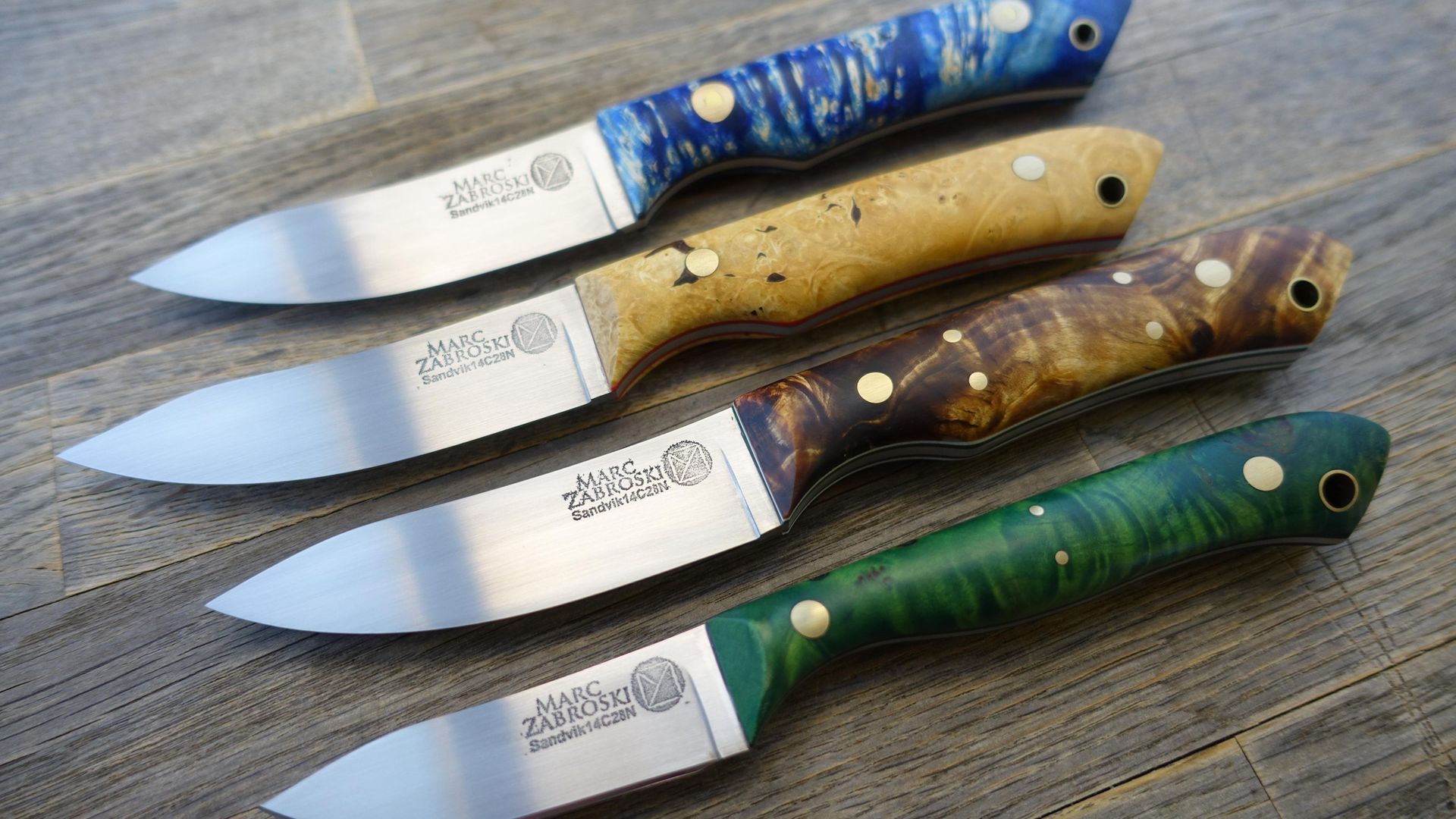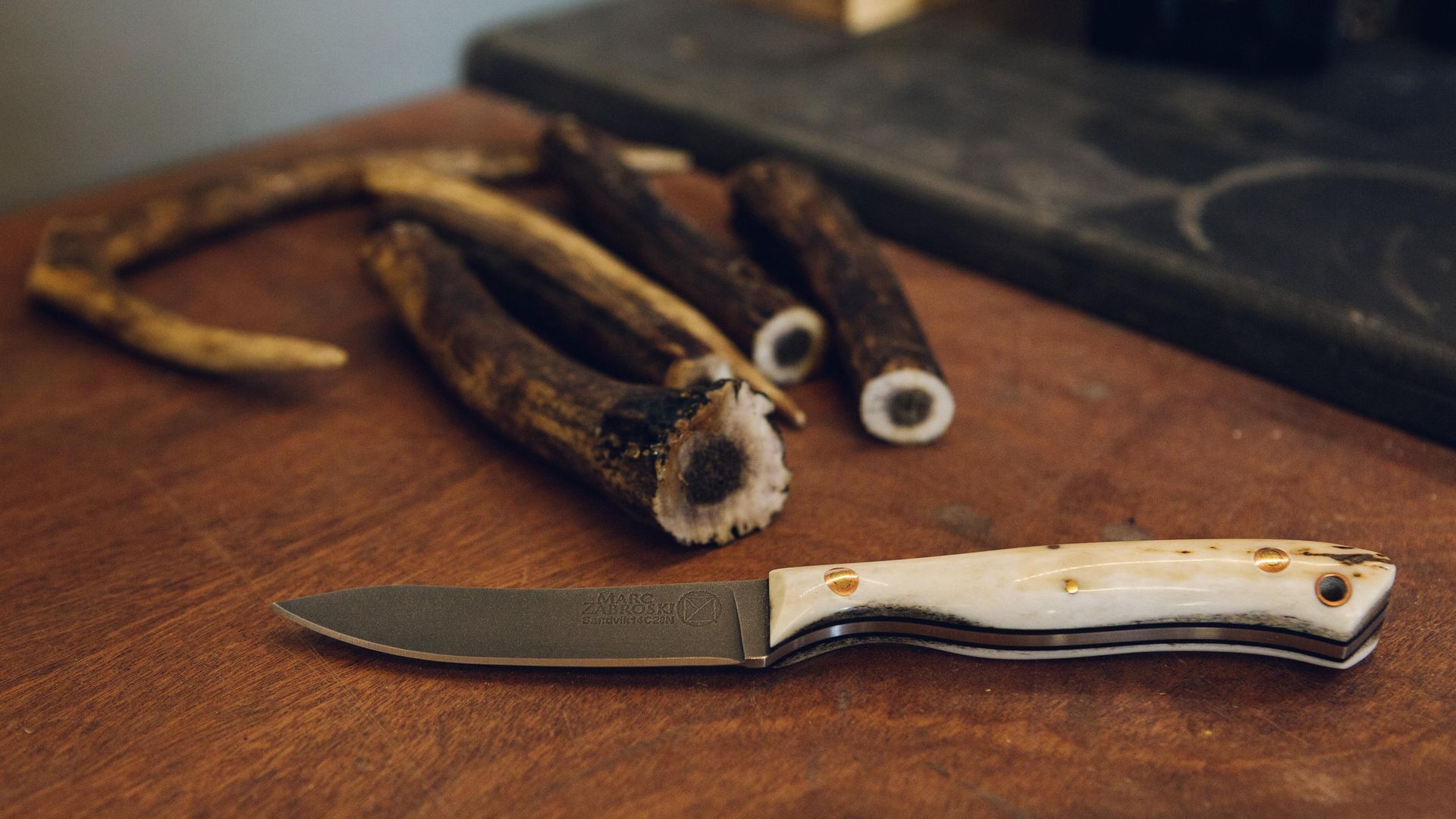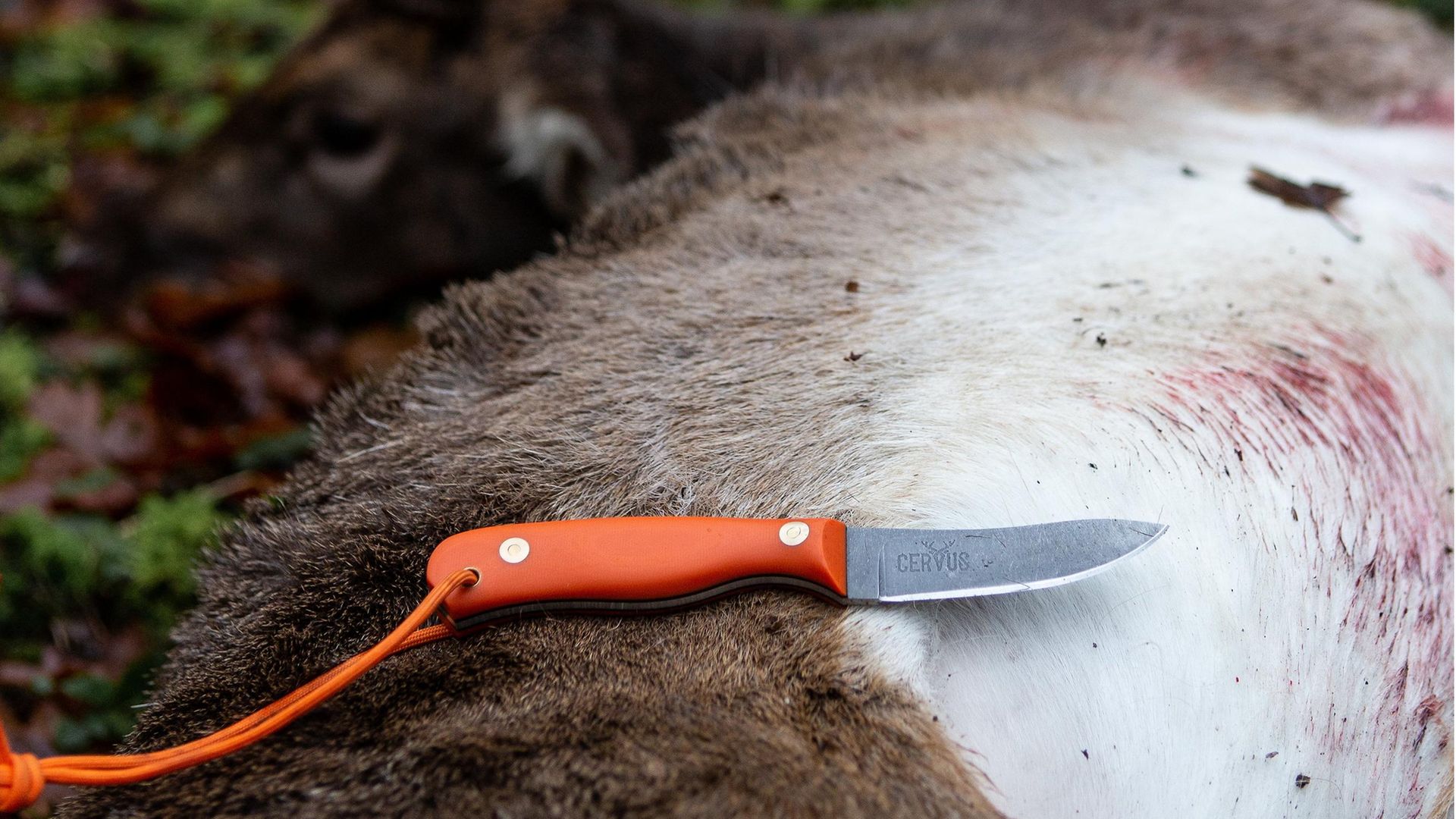Art and science are brought together in Marc Zabroski’s impressive craft. Owen Beardsmore paid a visit to his knife making workshop to see how the magic happens
 credit: Cervus-UK
credit: Cervus-UK
It started with a click: that’s how I’d best describe my meeting with Marc Zabroski. He first came to my attention when I saw the stunning images of knives that he had crafted on his Instagram page. I followed his page with interest and soon found myself ‘liking’ most things he posted. After commenting on an orange-handled G10 model he calls his ‘Deerstalker’, I found myself giving him a call to discuss how to get one. I now have one hanging off my stalking belt, which I use as my standard field knife for the winter cull.
Last autumn (at which point we were both in Tier 3 areas), I arranged to visit his new Suffolk workshop while en route to a stalking venue so that I could meet him in person (at a distance) and collect my new Deerstalker knife.
 credit: Cervus-UK
credit: Cervus-UK
What a great set-up he has. Having recently moved out of his garden shed and into a rural workshop on a sporting estate near Bury St Edmunds, Marc now has the available space to dedicate specific benches, machine areas and rooms to each stage in the process of his craft so that he can work in a more orderly fashion. The result already is an increase in his productivity, job satisfaction and, of course, sales.
As Marc showed me around, he beamed with pride at achieving the move and explained how his business had developed from a fascination to a hobby, then into a career.
“In 2014, I took an old Frosts Mora knife and chiselled off the moulded plastic handle until I was left with just the steel,” he tells me. “I then proceeded to crudely fit, shape and finish my own wooden handle using unseasoned birch. It was certainly no work of art – lopsided and unsymmetrical – but I had made it. It was this simple act that started me along the path to becoming a full-time knifemaker!”
I asked if he had been given any subsequent formal training by a past master. He laughed and said, “Not at all. I am one of the YouTube generation.” He had spent hour after hour online, researching the technical requirements for making a knife in all its stages. Through much trial, error and sandpaper, he became familiar with the many stages and processes involved in fitting and finishing a handle to a pre-made knife blank.
 credit: Cervus-UK
credit: Cervus-UK
Once he had perfected his handle-making skills, he aspired to crafting his own blades, which meant thorough research and an understanding of the science that is metallurgy, the skill that is knife-edge geometry, and the art of obtaining a good heat treatment to harden the steel correctly, which gives that perfect edge. Again, after much practice, many mistakes and dedicated improvements, he was able to combine the two into his bespoke finished knife, made entirely by him from raw materials.
The decision to go full-time required serious investment, as the tooling is quite diverse and Evenheat kilns and two 72" belt grinders do not come cheap. But all that equipment now takes pride of place in the workshop.
Marc’s preferred steel for his knife blade production is a Sandvik 14C28N bar. Using marking blue to mark out a template, he drills the bolt holes and then cuts out the profile. This type of stainless steel has an extremely high hardness, giving an excellent edge performance, as well as good corrosion resistance. For his special occasion productions, he will use a RWL34, which is a powdered steel, giving a uniform grain structure for high edge strength, corrosion resistance and an ultra-edge sharpness.
As a passionate outdoorsman, he specialises in what he knows, crafting blades particularly for the hunting, bushcraft and wilderness traveller. His experiences in the field have shaped his knife form, where function and aesthetics are considered in equal measure.
 credit: Cervus-UK
credit: Cervus-UK
“I am trying to make the best possible knife for its intended job,” he says, “a process that is constantly evolving as my skill, knowledge and equipment improve.”
His passion for his product is infectious. The model I had originally ordered was his Deerstalker, which he told me is his best seller. It is available with a variety of handles, but my choice was an orange-coloured G10 handle. G10 is created by taking layers of fibreglass, soaking them in resin, compressing them and then baking it. This gives an extremely tough but lightweight and flexible material that is also extremely grippy!
I looked at the other models he was in the process of making, as well as some that were ready to be shipped to their new owners. The variety was amazing, with many wood finishes in walnut, poplar, elm and maple to name but a few.
 credit: Cervus-UK
credit: Cervus-UK
All the woods are stabilised by submerging them in a pressure chamber, where a thermo-setting resin replaces any airholes in the wood, ensuring their longevity in practical use.
All his knives come complete with a fitted sheath (also made by Marc) from either leather or Kydex (thermoplastic acrylic) and are finished, unsurprisingly, to his high standard. All the knife blades, leather sheathes and packaging are branded with his name and logo, based around his initials. You cannot help but feel the pride that has gone into the production of each bespoke piece.
Finally, and with a big smile, Marc handed me my completed knife, explaining in detail that its design had derived from much time spent testing and trialling in the field, primarily, as a gralloching knife. He then took the advice and opinions from other experienced stalkers he knew and finalised the model in production today.
 credit: Cervus-UK
credit: Cervus-UK
As I drew it from its Kydex sheath, the ergonomic handle felt snug in my hand, as it is deeply sculpted, giving a positive locked feel. I knew this would help guide it strongly as I worked. It looked as good as it felt, and as I turned it in my hand, a nice surprise was seeing my business’s (Cervus) logo on the other side of the blade.
“Bloody awesome,” were the first words that came from my mouth. Marc then surprised me further when he handed me a smaller version of my Deerstalker, which he calls the Pocket Hunter. “Here’s its companion,” he laughed. “Let me know what you think.”
Before the day had ended, both knives were out in the field, being put to the test. One was used on a roe doe, and my Pocket Hunter on a muntjac doe. Both were a pleasure to use. The sharpness was impressive and made light work of two field grallochs.
 credit: Cervus-UK
credit: Cervus-UK
I was so happy that I had met Marc, reached out to him and finally had a Zabroski blade on my belt! At a cost of £280, I consider it to be particularly good value for a hand-made knife, in comparison to others that are available.
To see more of what Marc does, check out his website